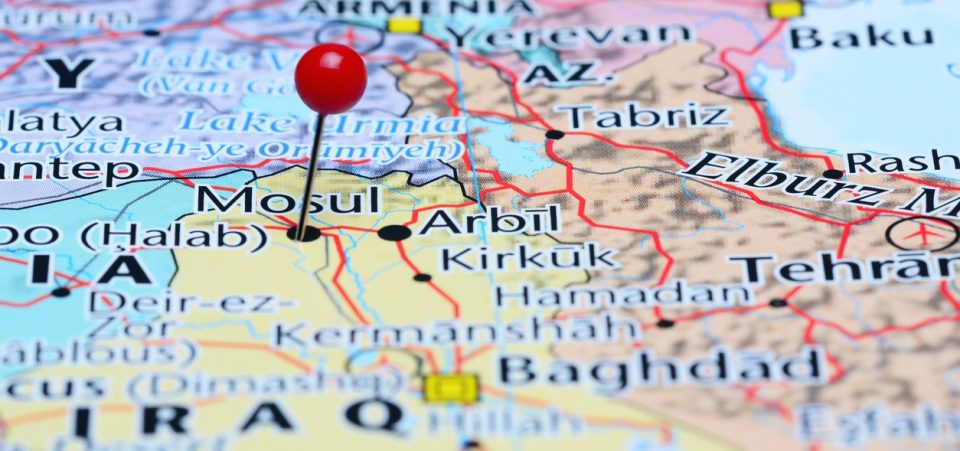A Threat Bigger than ISIS Hangs Over Iraq, Oil Production, and the World Economy
Iraq has become a major oil supplier to Europe again. Any major reduction, especially a sudden one, to oil production in Iraq would promptly cut the global oil supply. It would also cause a sudden—perhaps unsustainable—oil price hike. There is a potential biblical-scale threat to Iraq’s oil supply now, one grimmer than ISIS (aka ISIL, Islamic State, or Daesh): the Mosul Dam.
While ISIS could play a role, this threat is not ISIS per se. But it does have an Old Testament quality about it. The Mosul Dam could break and cause a massive flood. It would be the greatest flood in recent memory. Indeed, this is an even greater threat to Iraq, its people, and its resources than fundamentalists’ car bombs and suicide attacks.
Iraq Was World’s Fourth-Largest Oil Producer in 2016
Iraq produced some 4.8 million barrels of oil per day (bbl). Getting Iraq to agree to oil production cuts earlier in December was essential to lifting oil prices. It’s unclear, however, how mindful OPEC members will be of the new quotas.
There is a major risk lurking behind the scenes that could boost oil prices beyond any expectation.
For some key European and G7 economies like Italy, Iraq resumed its role as a top supplier. Indeed, with Libya—until 2011, the major supplier to southern Europe—having not recovered from the collapse of the Muammar Gaddafi regime, Iraq has filled the void.
The Mosul Dam regulates the flow of water to Iraq’s second-largest city and to millions of Iraqis who live along the Tigris River. The dam contains 11 billion cubic meters of water. If it broke, the dam would produce a flood to rival that of the ancient Mesopotamian Gilgamesh myth. The resulting colossal wave of water would swallow cities from Mosul to Baghdad, some 250 miles south.
The Gilgamesh story is the very same myth that many believe explains the biblical flood and Noah. (Source: “Before Noah: Myths of the Flood Are Far Older Than the Bible,” Time, April 1, 2014.)
To add a more familiar and contemporary perspective, if the Mosul Dam were to collapse, it would make the effects of Hurricane Sandy in New Jersey or Hurricane Katrina in New Orleans look like a suburban basement flood by comparison.
Americans Thought the End of ISIS Would Prevent the Flood, But…
American officials feared that ISIS could have attempted to smash the Mosul Dam. After an intense struggle, Kurdish forces have pushed out the Islamic State fighters and have taken control of the dam. (Source: “A Bigger Problem Than ISIS?” The New Yorker, January 2, 2017.)
But the risk has not gone away. It remains high because U.S. officials have inspected the dam and noted that it’s on the verge of collapse. The problem is not even structural: the dam was built to survive an air raid. During the Gulf War (1991), U.S. jets bombed its generator, but the dam remained intact. (Source: Ibid.)
No, the problem—say engineers who worked on the dam in the early 1980s—is that it sits on the wrong spot. Completed in 1984, the dam is located on a rock-soluble base. To keep it stable, hundreds of employees have to work 24 hours, seven days a week to pump a cement mixture into the base.
Without such maintenance, worry engineers, the rock could slip away, sinking the dam. But the recent history of Iraq has made it more difficult to manage the problem. An Italian firm, Trevi, won a tender to perform maintenance on the Mosul Dam, given the growing concerns of its structural stability.
Those who claim that fears of the dam collapsing are exaggerated still acknowledge that a permanent site of some 400 workers is necessary to ensure that the structure remains sound.
Locals have feared the dam’s potential catastrophic effects since it was first completed. The only permanent solution is to complete work on the construction of a second dam, further downstream, even closer to Mosul, suggest some engineers.
But the Islamic State still controls this area. The Iraqi government and its allies must retake Mosul and its surrounding area, establishing full control. Only then can work on a second dam begin. Without this necessary step, everything else in Iraq remains hanging in the air.
Iraq has used the excuse of the war to shift from producing three million bbl/day up to a maximum of 4.8 million. It now wants to reduce production to exploit the higher OPEC price. Baghdad is already thinking about the post-ISIS Mosul and the social and economic need to rebuild and invest.
But the Mosul Dam hangs on the future of Iraq like another ISIS. The dam also casts a shadow over the course of the global economy. A collapse would wipe out much of Iraq’s oil production. It would boost oil prices to levels not seen since 2012-2014 ($65.00-$110.00 bbl.)
An oil price spike amid slow growth in Europe and Japan (and uncertainties in the U.S. and China) would generate a heavy bearish market sentiment. Many economies in the West (and elsewhere) would collapse.







